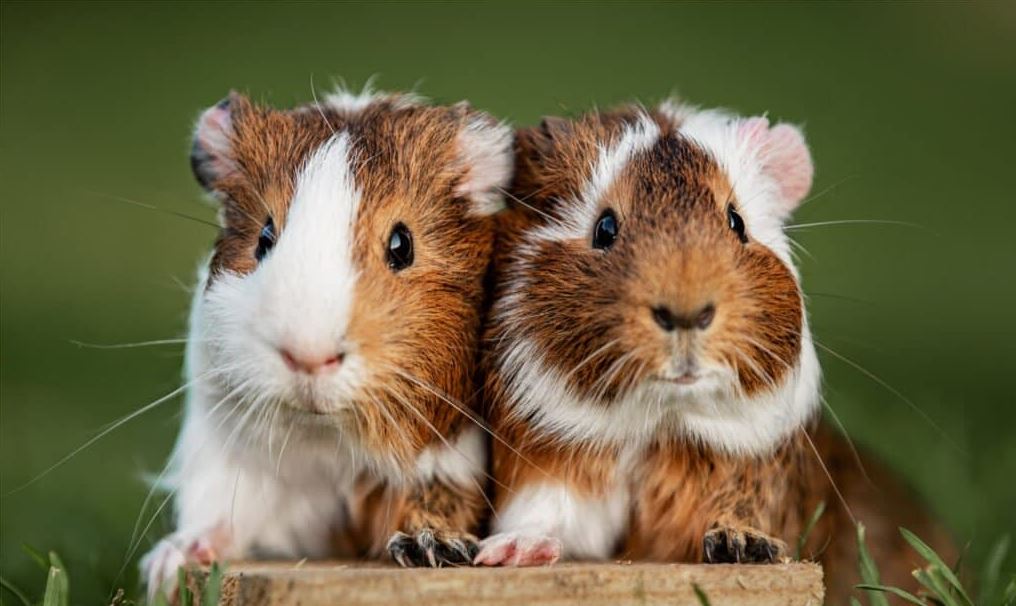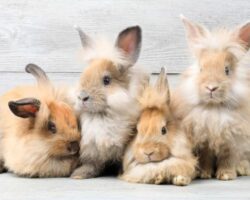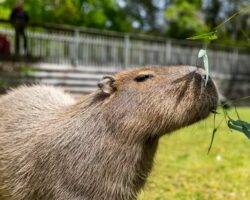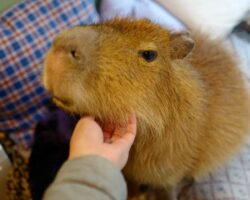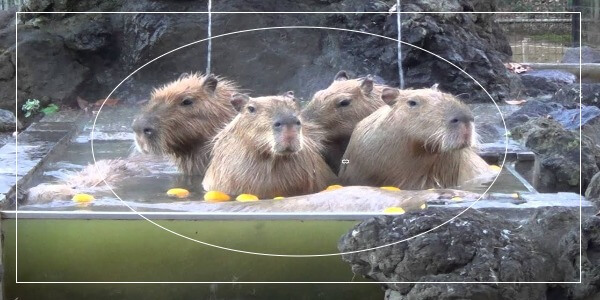Are you wondering if guinea pigs are rodents? These small mammals have short limbs and large heads. Their appearance makes one wonder if they are really rodents.
Whether you are confused or uncertain, we will provide you with all the answers you need to know about this.
To clear the notion, guinea pigs are rodents. Ignore their first name, they do not come from Guinea but from the Andes mountains in South America. Also, they are not related to pigs in any way.
Guinea pigs are grouped under the Caviidae family in the Rodentia order. This article will help you discover how guinea pigs are related to other rodents. Also, we will share the traits and features that make them rodents.
If you want to know about the guinea pig, where they come from, their history, behavior, what they eat, and their lifestyle, be sure to read this guide!
What Are Rodents?

Before we share details and insights about the guinea pig, it is important to start by knowing what a rodent is and how they differ from other creatures.
Simply put, rodents are mammals known for their two ever-growing incisors in the lower and upper jaws. Virtually all rodents, including capybaras, guinea pigs, mice, and rats have a set of continuously growing teeth they use to gnaw and chew objects.
The Rodentia order consists of varieties of rodents, including the little African pygmy mouse to the gigantic capybara. This order has multiple species of rodents; with their number running into thousands.
As expected, the Rodentia order also encompasses the Cavia porcellus, widely known as the guinea pig.
About The Caviidae Family
The Caviidae family is home to several rodents, including the guinea pigs. The origin and reason for their name remain an enigma as they are not from Guinea nor are they related to pigs.
However, the scientific community refers to them as “cavies” and you will hear a lot of breeders using this term often. So when next you hear someone talk about “cavies,” you can be sure the conversation is about guinea pigs.
The Cavia genus is the taxonomic home of the guinea pig. These little rodents originated from the Andes of South America but today, they are widespread worldwide.
Domestic cavies are believed to have descended from wild Montane guinea pig (cavia tschudii), which is considered their primary ancestor. There is a lot of research and study on this that shows it is true; however, the ancestors of the guinea pigs do not exist anymore and can’t be found in any part of the world.
But guinea pigs have a stable population and they are adopted as pets in several homes worldwide. The domestic guinea pig (Cavia porcellus) isn’t the only popular pet in Western communities. The domestic guinea pig takes up a significant portion of the culture of most indigenous Andean communities.
Many homeowners are buying rodents not to use them as a source of food but to keep them. As a matter of fact, the capybara is one of the unlikely pets you will find in many homes. Despite its large size, the capybara is adopted and kept as pets in many homes in and outside the U.S.
About Guinea Pigs

Guinea pigs have a long history and have existed for thousands of years. These rodents can be found in the wild and also serve as pets in several homes.
They come from the Caviidae family group, also known as the cavy family, which has just 19 species. Some of the members of this rodent family are capybaras and maras.
Capybaras and guinea pigs are related because they share similar characteristics such as coming from the same family, having the same physical body attributes, being social and playful, and coming from the same region – South America.
While there are only two capybara species, there are over six species of guinea pig in the world. The domesticated guinea pig, Cavia porcellus, is one of the most popular species. Aside from it, there are five other different species of guinea pigs.
Generally, domesticated guinea pigs (cavia porcellus) are believed to be descendants of wild Montane guinea pigs.
Montane guinea pigs lived several years ago but do they exist anymore? They come from the Andes and reach heights of 6,600 and 12,500 feet. Like most guinea pig species, they occupy rocky habitats with fresh green vegetation.
Although guinea pigs are not as big as the capybara, they measure anywhere between 8 and 16 inches long. Moreover, they exist in different colors such as white, black, brown, and orange.
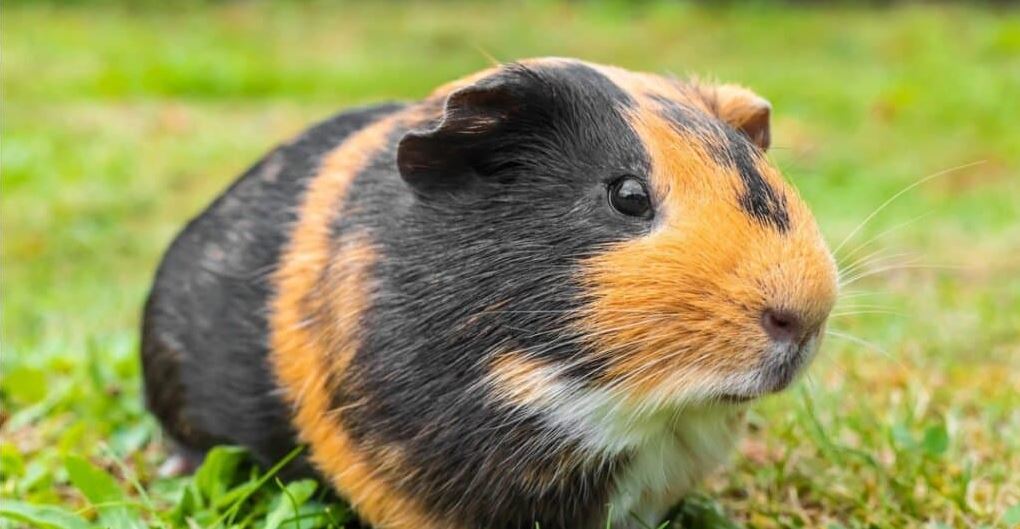
Guinea pigs are friendly. Their social and playful nature endear them to so many people who turn them into household pets. Unlike the capybara, it doesn’t make much to maintain or care for a guinea pig.
Their social, playful nature makes them suitable pets for children. Away from their home, guinea pigs exist in the wild. They live in habitats like rocky hillsides, savannahs, grasslands, and even deserts.
Guinea pigs are vulnerable and exposed to several predators in the wild so they require a lot of vegetation to feed and conceal themselves. They can also stay in expansive, open areas where they can see things and detect predators from afar.
Guinea pigs are smart animals, they can defend themselves from harmful predators by digging and constructing their own burrows. Additionally, they can occupy burrows that have been abandoned by woodchucks and other animals.
Guinea pigs are one of the most popular pets today. They have also made great contributions to the scientific community as they are used as specimens for studying several human-related medical problems such as scurvy, tuberculosis, juvenile diabetes, and pregnancy complications.
Guinea pigs are not the only rodents used in scientific research. Other rodents such as rats and mice have replaced them but guinea pigs can be used in certain areas.
Are Guinea Pigs Rodents?
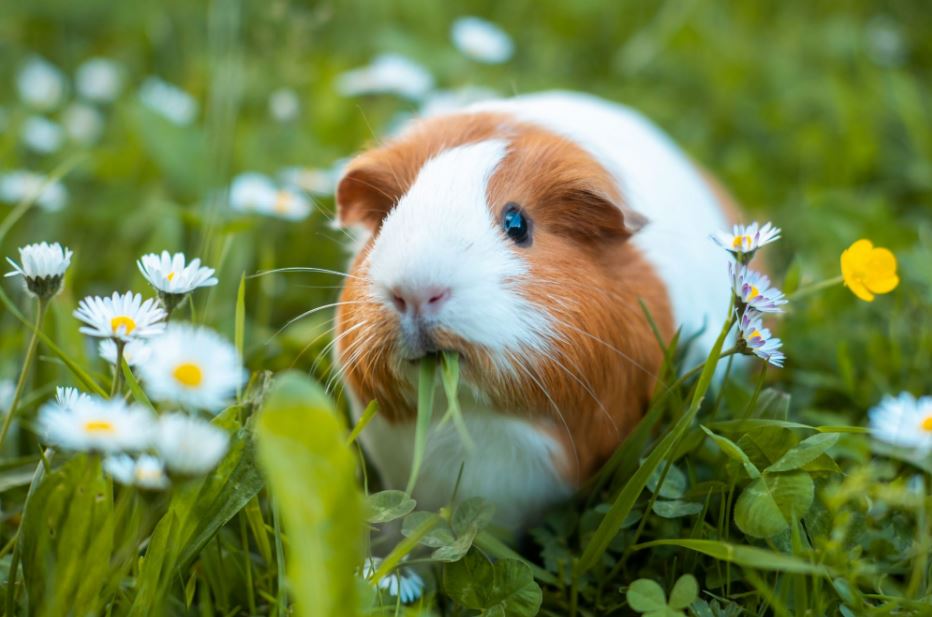
This is the big question. Guinea pigs are rodents. This is because they have all the main features and characteristics of rodents. These features distinguish them from other animals.
Like most rodents, cavies are herbivores and they have a unique set of teeth that never stops growing. Guinea pigs do not have canine teeth (fangs), which are sharp and found in most carnivorous animals.
Guinea pigs have sharp teeth and they share a set of incisors as other rodents. Their dentition has a large gap between the incisors and where the premolars out to be.
One of the main characteristics of rodents is that their teeth keep growing for the rest of their lives. Sometimes, the ever-growing incisors can be problematic when they outgrow their mouth.
So, they must constantly gnaw and chew different things and objects to stop their teeth from overgrowing. This way, their teeth is kept at a manageable size.
Apart from their teeth, guinea pigs have a powerful hearing system and a strong sense of smell as other rodents. Their sensory systems can help them detect incoming predators or make them conscious of the happenings in their environment.
The Guinea pig diet is mainly made up of grass. They are herbivores, so they can consume a lot of plants and vegetables, including hay, flowers, food pellets, seeds, leaves, bark, and fruits. However, grass hay remains their favorite food.
Another feature guinea pigs possess that you can also find in other rodents is their toes. They have four toes on their front teeth as well as three toes on their hind feet. These toes feature powerful sharp claws for digging and burrowing.
Behavior
Most guinea pig species are either crepuscular or diurnal animals. Crepuscular animals stay in the twilight hours of dawn and dusk while diurnal animals are active in the day and asleep at nighttime. Funny enough, guinea pigs can fit into any of them.
One of the most common features the guinea pig shares with the capybara is that it is a social animal. Guinea pigs in the wild tend to live together in groups. These groups can contain 10 or more members.
Additionally, guinea pigs are extremely vocal. Like most rodents, they use different methods such as squeaks and chirps to communicate amongst themselves. These sounds can be used to show excitement or warn of danger or threat.
Guinea pigs don’t have a specific breeding season; they can reproduce anytime during the year. Their gestation period is between 58 and 72 days and their litter size varies but it typically ranges between one and six.
While the young of other rodent species are born either hairless or blind, cavies are well-developed at birth. Newborn guinea pigs have teeth, hair, partial vision, and are extremely mobile.
Baby guinea pigs rely on their mother’s milk for food for around three weeks after birth but can start eating the strong food eaten by adults within the first week of birth.
Are Guinea Pigs Endangered?
Don’t worry if the guinea pig population is threatened. In fact, their population is stable – thanks to their popularity as pets in several parts of the globe.
While guinea pigs are not endangered, they do have some predators. Some of the common predators of guinea pigs are cats, dogs, weasels, and birds of prey.
Humans are considered to be the biggest guinea pig predators. Guinea pigs are farmed, poached, and hunted for food and other purposes in many parts of South America. Despite this, their general popularity isn’t under threat.
While the domestic guinea pig isn’t under threat, there is one guinea pig species that is endangered and that is the South Catarina guinea pig.
South Catarina’s guinea pigs come from South America. Their origin is traced to a small coastal island near Brazil. Sadly, there are less than 50 of them left in the wild, which makes them endangered.
How To Keep Your Guinea Pig Healthy
If you own a pet guinea pig, you must understand that it is your responsibility to ensure the animal is healthy and safe. In this section, we will provide you with multiple tips to keep your guinea pig in the best condition.
1. Balanced Nutrition
Guinea pigs are herbivores. They feed on varieties of grasses and vegetation, including grass hay, fruits, etc. These rodents have a specialized diet, so its essential to provide them with an adequate supply of rich vegetation.
It is important to provide your pet guinea pig with vitamin C. The guinea pig’s body system does not produce vitamin C, so it’s important to get supplements or feed the rodent with foods containing sufficient amounts of vitamin C.
2. Proper Housing
Guinea pigs should be raised in a neat, tidy environment. If you plan to keep a guinea pig, you must provide the rodent with a large, spacious, and well-ventilated area.
Whether you will be keeping it in a cage or any form of enclosure, you must ensure the area is cleaned regularly. Guinea pigs require a clean environment to stay healthy and disease-free.
3. Regular Exercises
Keeping a guinea pig in a cage can limit its mobility to an extent. Guinea pigs are social animals, so you need to play with them or ensure they exercise or move about regularly.
When you unlock their cages, take them to areas where they are free to roam and play around. You can also go with toys to help them play and interact. This is vital for their growth and it helps them stretch their little legs, exercise their body, and improve their overall health.
4. Social Interaction and Engagement

As mentioned, guinea pigs are social animals. They are playful and tend to interact wherever they find themselves.
If you don’t have the time to play with your pet guinea pig, you can consider getting another guinea pig to interact with the one you presently have. Moreover, getting toys for your guinea pig will keep it busy and prevent it from getting bored.
5. Medical Care
Veterinary care is necessary to diagnose and address potential health issues in your pet. Pet owners are advised to ensure regular vet visits to help identify or discover any health problem in their pets before it become worse.
If you have a vet already, maybe for your cat or dog, it is important to check if understand the health needs of the guinea pig and can handle them.
If the vet isn’t familiar with guinea pig health cases, you can ask around or search for qualified vets who can provide quality healthcare service for your little pet.
Such vets understand the needs of the guinea pigs far better than you, the owner, and can provide you with more tips and guidance to improve your pet’s health and life expectancy.
Conclusion
Guinea pigs are rodents and this isn’t supposed to be an argument. These little creatures have almost all the features and characteristics of rodents. They belong to the Caviidae family, which has a place in the Rodentia order.
Now that you know guinea pigs are rodents, you may be shocked to find out other animals that are classified as rodents. Read any of the posts below for more insights on rodents.

